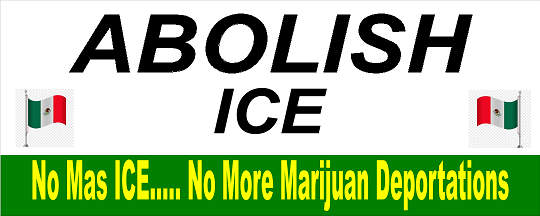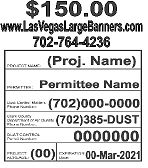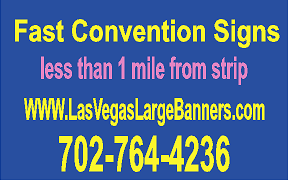LA Immigration Protest Banners 2025 are very popular at Anti ICE immigration rally’s. In 2025, Los Angeles became a focal point for immigration protests. With demonstrators using banners to voice their opposition to federal immigration policies. One prominent example was the “A Day Without Immigrants” protest, where thousands marched through downtown LA. Holding signs that read “Full Rights for All Immigrants” and “Stop Deportations.” These banners not only conveyed messages of resistance. But also highlighted the significant role immigrants play in the city’s economy and culture. The use of such banners served as a powerful tool for activists to communicate their demands and mobilize support.
The display of Mexican flags during these protests sparked a national debate over symbolism and patriotism. Critics, primarily conservatives, labeled the presence of foreign flags as un-American. In contrast, supporters argued that displaying the Mexican flag represented heritage, solidarity, and historical realities, especially in states like California that were once part of Mexico. Historians and activists noted that the use of foreign symbols in protest is a longstanding way. So as to highlight marginalized communities’ struggles. Latino advocates emphasized the deep historical ties Mexicans have to the region and questioned why cultural pride in this context is deemed anti-American. Especially when symbols like the Confederate flag don’t provoke the same criticism. pressdemocrat.com+2apnews.com+2politico.com+2
LA Immigration Protest Banners 2025 Has Caused Las Vegas To Be A City of Resistance
In Las Vegas, immigration protest banners also played a crucial role in demonstrations. During a rally organized by the Service Employees International Union (SEIU) in support of immigrant rights. Participants carried large banners emblazoned with slogans like “Immigrants Make America Great” and “Defend Immigrant Families.” These banners not only expressed solidarity with undocumented individuals. But also challenged the narrative that immigrants are a threat to national security. The visibility of these banners in the heart of Las Vegas underscored the city’s commitment to immigrant rights and its rejection of divisive rhetoric.
The protests in Las Vegas were part of a broader national movement against the Trump administration’s immigration policies. Demonstrations erupted across the U.S., especially in Los Angeles, in opposition to President Trump’s intensified immigration raids. In LA, clashes between demonstrators and police led to over 400 arrests. With law enforcement using horses, munitions, and batons to disperse crowds after declaring gatherings unlawful. Mayor Karen Bass condemned Trump’s actions, calling them a “drastic and chaotic escalation” due to unnecessary federal immigration raids. She, along with other local officials, criticized the deployment of nearly 5,000 National Guard and Marine troops. Citing fears over the militarization of local law enforcement operations. theguardian.com+3expressnews.com+3azmirror.com+3theguardian.com
New York: A Diverse Tapestry of Voices
New York City witnessed a surge in immigration protests, with banners reflecting the city’s diverse immigrant communities. At a rally in downtown Manhattan, demonstrators held signs that read “Melt ICE” and “Undocumented and Unafraid,” symbolizing their defiance against Immigration and Customs Enforcement (ICE) raids. These banners not only expressed opposition to federal immigration policies. But also highlighted the resilience and courage of undocumented individuals who continue to live and work in the city. The widespread use of such banners emphasized the unity and strength of immigrant communities in New York.
The protests in New York were part of a broader national movement against the Trump administration’s immigration policies. Demonstrations erupted across the U.S., especially in Los Angeles, in opposition to President Trump’s intensified immigration raids. In LA, clashes between demonstrators and police led to over 400 arrests. With law enforcement using horses, munitions, and batons to disperse crowds after declaring gatherings unlawful. So Mayor Karen Bass condemned Trump’s actions, calling them a “drastic and chaotic escalation” due to unnecessary federal immigration raids. She, along with other local officials, criticized the deployment of nearly 5,000 National Guard and Marine troops. So thus citing fears over the militarization of local law enforcement operations.
Arizona: From Phoenix to Flagstaff
Arizona saw a variety of immigration protest banners across the state. In Phoenix, protesters gathered at the state Capitol, waving Mexican flags and signs that read “We Speak for Those Who Can’t” and “Immigrants Make America Great.” These banners not only expressed solidarity with undocumented individuals but also challenged the narrative that immigrants are a burden on society. In Flagstaff, a march along Route 66 featured banners that read “Education Not Deportation,”. Reflecting the community’s support for immigrant students and opposition to policies that threaten their future. These banners served as a visual representation of the state’s commitment to immigrant rights and its rejection of discriminatory policies.
The protests in Arizona were part of a broader national movement against the Trump administration’s immigration policies. Demonstrations erupted across the U.S., especially in Los Angeles, in opposition to President Trump’s intensified immigration raids. In LA, clashes between demonstrators and police led to over 400 arrests. With law enforcement using horses, munitions, and batons to disperse crowds after declaring gatherings unlawful. So Mayor Karen Bass condemned Trump’s actions, calling them a “drastic and chaotic escalation” due to unnecessary federal immigration raids. She, along with other local officials, criticized the deployment of nearly 5,000 National Guard and Marine troops. Citing fears over the militarization of local law enforcement operations. azmirror.com+1expressnews.com+1theguardian.com
The Enduring Legacy of Protest Banners
The use of protest banners in 2025 across Los Angeles, Las Vegas, New York, and Arizona highlighted the power of visual communication in social movements. These banners not only conveyed messages of resistance but also united diverse communities in a common cause. As the movement for immigrant rights continues, the legacy of these banners serves as a reminder of the importance of standing up for justice and equality. The enduring presence of these symbols in protests underscores the ongoing struggle for immigrant rights and the need for continued advocacy and action.
In Los Angeles, the display of Mexican flags during protests sparked a national debate over symbolism and patriotism. Critics, primarily conservatives, labeled the presence of foreign flags as un-American. In contrast, supporters argued that displaying the Mexican flag represented heritage, solidarity, and historical realities, especially in states like California that were once part of Mexico. Historians and activists noted that the use of foreign symbols in protest is a longstanding way to highlight marginalized communities’ struggles. Latino advocates emphasized the deep historical ties Mexicans have to the region and questioned why cultural pride in this context is deemed anti-American, especially when symbols like the Confederate flag don’t provoke the same criticism. apnews.com+1politico.com+1
In Las Vegas, immigration banners also played a crucial role in demonstrations. During a rally organized by the Service Employees International Union (SEIU) in support of immigrant rights, participants carried large banners emblazoned with slogans like “Immigrants Make America Great” and “Defend Immigrant Families.” These banners not only expressed solidarity with undocumented individuals but also challenged the narrative that immigrants are a threat to national security. The visibility of these banners in the heart of Las Vegas underscored the city’s commitment to immigrant rights and its rejection of divisive rhetoric.
Conclusion
In New York City, banners such as “Melt ICE” and “Undocumented and Unafraid” symbolized the city’s defiance against Immigration and Customs Enforcement (ICE) raids. These banners not only expressed opposition to federal immigration policies. But also highlighted the resilience and courage of undocumented individuals who continue to live and work in the city. The widespread use of such banners emphasized the unity and strength of immigrant communities in New York.
In Arizona, protesters gathered at the state Capitol, waving Mexican flags and signs that read “We Speak for Those Who Can’t” and “Immigrants Make America Great.” These banners not only expressed solidarity with undocumented individuals. But also challenged the narrative that immigrants are a burden on society. In Flagstaff, a march along Route 66 featured banners that read “Education Not Deportation,” reflecting the community’s support for immigrant students and opposition to policies that threaten their future. These banners served as a visual representation of the state’s commitment to immigrant rights and its rejection of discriminatory policies.
The enduring presence of these symbols in protests underscores the ongoing struggle for immigrant rights and the need for continued advocacy and action. As the movement for immigrant rights continues. The legacy of these banners serves as a reminder of the importance of standing up for justice and equality.







